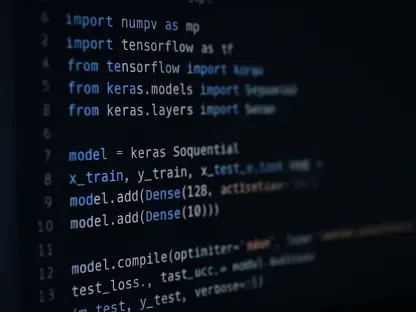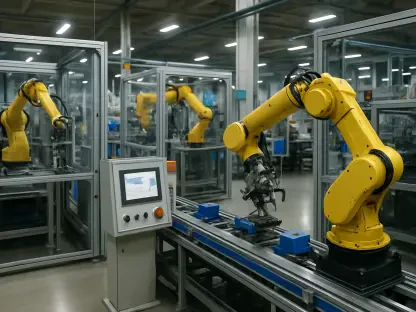In the ever-evolving landscape of software development, the integration of serverless Continuous Integration and Continuous Delivery (CI/CD) is reshaping how DevOps teams approach their workflows. As organizations strive for efficiency and speed, serverless CI/CD emerges as a catalyst for innovation, offering automation and flexibility that traditional methods lack. With the serverless computing market projected to reach a staggering 50.86 billion USD by 2031, this technology is proving to be pivotal in optimizing operations and ensuring seamless software deployment. This exploration uncovers how serverless CI/CD is redefining DevOps practices, focusing on deployment speed, cost efficiency, code quality, and more.
Driving Faster Deployment
Accelerating Time to Market
In today’s competitive technology landscape, speed is crucial for success. Serverless CI/CD facilitates a faster time to market by automating essential tasks like code testing and deployment into production. Automation streamlines the cycle, allowing teams to focus on innovation rather than monotonous manual processes. With automated code integration, organizations unlock the potential for quicker releases, ensuring their software remains cutting-edge. The reduction in manual intervention also means fewer errors, creating a foundation for consistent and reliable software production. This swift pipeline not only boosts productivity but also empowers teams to adapt rapidly to market changes.
Streamlining Software Releases
As servers become obsolete in favor of serverless technologies, the deployment process undergoes a significant transformation. Serverless CI/CD plays a vital role in this progression, ensuring that code seamlessly moves from development to production without bottlenecks. By enhancing communication and collaboration among team members, serverless CI/CD eliminates the traditional silos that often hinder effective software delivery. Teams can engage in parallel code integrations, contributing to a unified development approach that minimizes the chances of encountering late-stage issues. This interconnected environment fosters innovation while significantly trimming the time needed to move software from conceptualization to reality.
Cost Efficiency and Resource Management
Minimizing Development Costs
In the quest to cut down unnecessary expenditures, serverless CI/CD introduces a paradigm shift in managing delivery costs. By reducing reliance on manual intervention through automated processes, it achieves resource efficiency and cost savings. Automation not only decreases the time required for repetitive tasks but also eliminates the need for continuous maintenance of physical servers, which often incurs additional expenses. Furthermore, serverless CI/CD optimizes resource allocation, allowing teams to allocate their efforts more strategically. Companies can redirect these savings towards further innovation and development, ultimately enhancing their competitive edge in the marketplace.
Enhancing Return on Investment
Serverless CI/CD not only curtails delivery costs but also amplifies the return on investment through efficient resource utilization. Automated pipelines improve productivity by redirecting developers’ focus from mundane tasks to strategic projects that align with business goals. As a result, DevOps teams become more agile, and their ability to respond promptly to customer needs or market demands is heightened. In addition, smarter resource allocation leads to higher overall project success rates, ensuring organizations maximize the impact of their investments. As such, serverless CI/CD acts as a cornerstone, driving economic efficiency across the software development lifecycle.
Enhancing Code Quality
Facilitating High-Quality Code
Maintaining superior code quality is at the heart of successful software development. Serverless CI/CD contributes to this goal by facilitating robust code testing and integration. Within a shared repository, team members can collaborate effectively, pinpointing errors and bugs early in the development process. This environment not only enhances communication and coordination but also ensures that code integrity is preserved throughout the development lifecycle. The shared insights gained from concurrent testing help teams deliver refined software versions that meet high-quality standards, reducing the likelihood of severe flaws post-deployment.
Promoting Collaborative Development
Serverless CI/CD encourages a culture of teamwork by providing a collaborative platform for code integration and testing. This collaborative approach involves multiple teams merging their development efforts, creating an ecosystem where knowledge-sharing is commonplace. The collective expertise ensures that vulnerabilities are quickly identified and rectified, preventing any potential negative impact on the final product. Ultimately, this collaboration leads to stronger, more reliable software outputs, as diverse perspectives converge to address challenges and innovate solutions efficiently. Such a unified approach further cements the role of serverless CI/CD as a transformative force in software development.
Simplifying Rollbacks and Debugging
Efficient Rollback Management
A robust software pipeline demands efficient rollback capabilities to handle potential errors without derailment. Serverless CI/CD addresses this requirement with an intuitive rollback mechanism, akin to an ‘undo’ button in digital environments, providing quick recovery paths when tasks fail. This rollback feature saves both time and resources, enabling teams to rectify issues promptly and maintain project continuity. The ease of reverting changes encourages experimentation and thorough testing, as the assurance of a safety net minimizes the risks associated with innovative approaches, enhancing confidence in development processes.
Accelerating Debugging Processes
Debugging, often a daunting aspect of software development, receives a substantial efficiency boost through serverless CI/CD. The integration of automated testing within pipelines drastically shrinks debugging time, allowing immediate identification and resolution of errors. This accelerated feedback loop prevents protracted delays that could hinder project timelines and affect product quality. Automation also reduces the dependency on manual interventions, ensuring that code is vetted through consistent and objective testing protocols. By streamlining these processes, serverless CI/CD upholds software integrity while expediting its journey to market readiness, setting a new standard for efficiency in development workflows.
Performance Metrics and Accountability
Monitoring App Performance
Tracking real-time performance metrics and app functionality is key to delivering a quality product. Serverless CI/CD equips teams with the tools to continually monitor and assess software performance, providing insights that inform strategic adjustments. Access to precise metric data enables teams to preemptively address issues, refining applications before they advance to production. With serverless CI/CD, continuous monitoring becomes integral to the development process, ensuring that performance metrics are not an afterthought but a guiding factor throughout software evolution. Companies benefit from increased transparency and efficiency, resulting in refined and high-performing software.
Fostering Accountability in Projects
In the dynamic world of software development, integrating serverless Continuous Integration and Continuous Delivery (CI/CD) is transforming the approach of DevOps teams to their workflows. As organizations aim for greater efficiency and swifter operations, serverless CI/CD is emerging as a driver for innovation, providing automation and flexibility that traditional approaches often lack. With the serverless computing market expected to skyrocket to approximately 50.86 billion USD by 2031, this technology is playing a crucial role in optimizing processes and guaranteeing smooth software deployment. This examination highlights how serverless CI/CD is redefining DevOps practices, with a focus on accelerating deployment speeds, enhancing cost efficiency, and improving code quality. Ultimately, serverless CI/CD is seen as a key tool in navigating modern software challenges, ensuring that organizations can keep pace with technological advancements and meet increasing demands efficiently.









